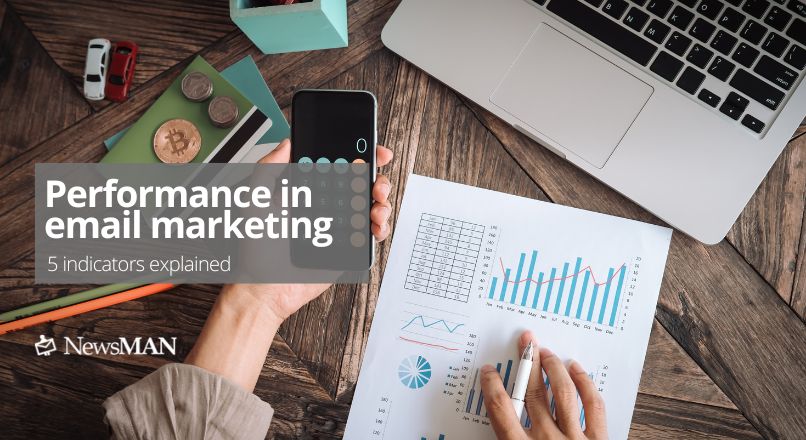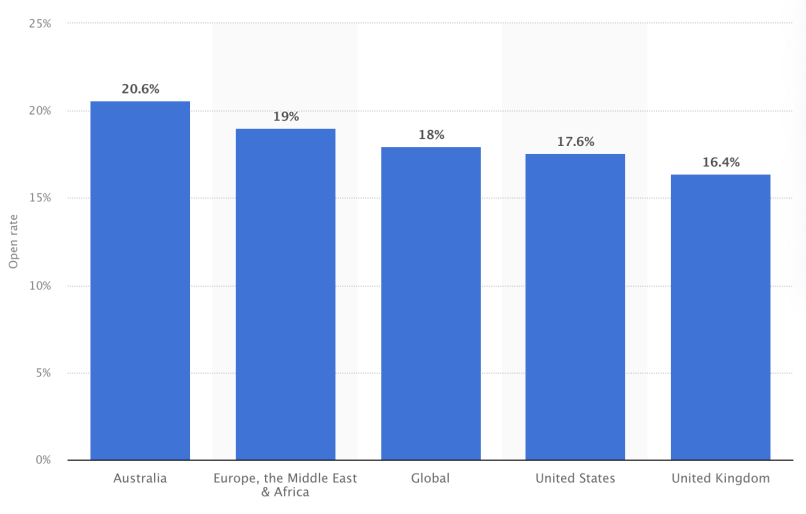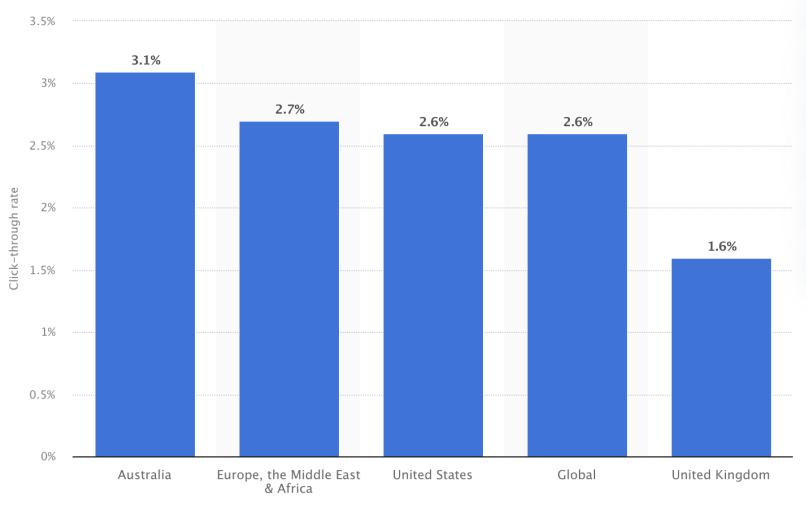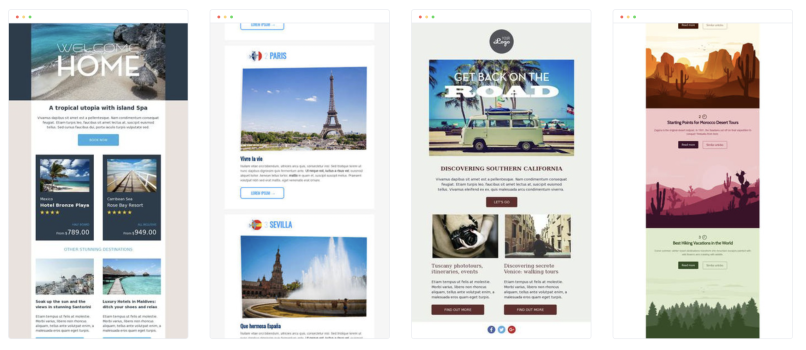How do you measure the performance of email campaigns? 5 indicators explained

Did you know that studies consistently rank email marketing at the top of promotion and sales methods, often above social media or SEO? But how do you know if your strategy is working and if you are fully enjoying the benefits of sending newsletters?
Simple: learn how to measure the performance of your email marketing campaigns. Of course, in practice it’s not that ‘simple’, but anyone, with a little help, can interpret a range of data to understand what works and what doesn’t.
Below, we review some of the most important metrics for measuring email marketing effectiveness – some simple, some complex – explain what problems may exist and how you can optimise campaigns for each.
- Newsletter open rate
- Click-through rate in email marketing
- Email campaign conversion rate
- Newsletter unsubscribe rate
- Return on investment in email marketing
- Other email campaign performance indicators
Newsletter open rate
The open rate shows you what percentage of all those to whom you have sent a newsletter have opened it. It’s a figure that doesn’t tell you much unless it’s put in context. Specifically, you need to compare the open rate of your campaigns with average newsletter open rates, and compare your campaigns over time. Globally, the average email open rate was 18% in 2020, with variations by region, as shown in the graph below (Statista, 2021).

Some industries, such as real estate, education, finance or healthcare have above-average open rates, while in travel, technology or internet marketing open rates are below average, SmartInsights shows.
A low open rate may indicate deliverability issues or a message that is not appropriate for the target audience.
How to improve email campaign open rates
- Make sure emails get past spam filters and into your inbox.
- Frequently clean your list of inactive contacts and incorrect emails.
- Segment your database and send personalised newsletters based on the characteristics and interests of each segment.
- Write newsletter titles that arouse curiosity.
- Send emails at the optimal time for your subscribers. Studies show that time of day influences open rates and that emails are most frequently opened in the first hour after sending.
- Create relevant and interesting content that subscribers look forward to seeing, every time.
Click-through rate in email marketing
The click-through rate shows what percentage of all recipients of an email marketing campaign clicked on at least one link in the newsletter. This figure tells you how relevant the content you send is to your subscribers and how persuasive you are.
According to Statista, in 2020, the average click-through rate globally was 2.6%, with different figures depending on the region, as shown below.

A below-average click-through rate means that emails are not compelling enough, either because the information is not presented well visually or because the message is not useful and relevant.
How to improve your newsletter click-through rate
- Send professionally designed campaigns that highlight information in an attractive way. For ease of use, use a newsletter template like the ones below. In the NewsMAN gallery, you can find hundreds of these email templates for different occasions, seasons or industries.

- Add visible call to action buttons.
- Make sure your emails are responsive and display correctly on different devices.
- Test different message and call to action types.
- Segment your subscriber list and use content personalization whenever possible.
- Include links to your social media pages, with a prompt for people to follow you. Send subscribers only to pages that have been updated recently and on which you post content consistently.
Email campaign conversion rate
The conversion rate shows what percentage of all newsletter recipients clicked on a link and completed the requested action: fill out a form, make a purchase, download an ebook, etc. Conversion is defined and measured according to the purpose of the email marketing campaign.
Because a conversion can be defined in many ways and because it depends on many factors, from email effectiveness to landing page effectiveness, the averages reported by different studies vary. Barilliance reports an average conversion rate of 15% in 2021, down from previous years, while GetResponse puts the average at 17%, with variations between 2% and 30% depending on the industry.
As with the other metrics presented, averages serve as a guide, but the most important thing is to measure the performance of email marketing campaigns over time and optimise based on the evolution of the figures.
Measuring conversion rates involves integrating email marketing services with the website. NewsMAN easily connects to your web pages and helps you not only measure conversions, but also get valuable information about your customers, which you can then use to segment your database and send effective newsletters.
How to improve your email marketing conversion rate
- Set a clear goal for your email marketing campaign, define what a conversion means and be consistent in how you measure.
- Write the email title and message with the goal in mind. Don’t ramble because you will dilute the effectiveness of the newsletter.
- Make sure the message and call to action button are consistent with the page the subscriber lands on. For example, if you want them to download an ebook, in the email you can spark curiosity about the content of the document, with the prompt to discover more information on the website. On the landing page, you can follow up with clear benefits for those accessing the resource, with download instructions and a relevant call to action.
- Test different call to action variations, both in the newsletter and on the landing page.
- We repeat because it’s important: segment your subscriber list and personalize your content.
Newsletter unsubscribe rate
The unsubscribe rate shows you what percentage of those who have received an email marketing campaign have opted out.
Several studies place the average unsubscribe rate at around 0.1%, a figure you should consider natural because a proportion of subscribers will lose interest over time no matter how good your email campaigns are.
An above-average or increasing unsubscribe rate over time signals mistakes in your email marketing strategy: you send newsletters too often, the message and offers are irrelevant to your audience, the emails are not as expected, the quality of the newsletters leaves something to be desired, etc.
How to improve unsubscribe rates
- Send emails consistently, but no more often than 1-2 times a week – unless you have something very important to communicate or you send an automatic email sequence following a subscriber action.
- Find out the reasons for unsubscribing with a short survey displayed to those who take this step.
- Make sure that emails are responsive and that content load times are short.
- Focus on quality and create great campaigns with professional design and valuable content.
- Keep your promises: if you say you’re sending a free resource for subscription, you need to do it quickly and without any other conditions. Be consistent in the topics you address and for which people have subscribed.
- Vary the types of email you send, so that education and information balance your commercial offers.
Return on investment in email marketing
Return on investment (ROI) shows you how much you earn for every penny you spend. Although this analysis is often ignored because it involves complex calculations and measuring results, it allows you to understand how well you are allocating your budget and resources and how different promotion channels compare to each other.
On average, globally, the return on investment in email marketing is 35:1 for all industries, and 45:1 in retail, eCommerce and consumer goods (Statista, 2021). This is a figure that is well above other promotional channels and demonstrates that it’s worth investing to create successful campaigns.
To measure ROI in email marketing you need to have two figures at hand: total sales generated by the newsletter and total investment in email marketing.
Our advice is to keep a budget for each promotion channel, from the beginning, in which you include both the costs of the different tools used and the hours dedicated by team members.
Also, integrate the email marketing platform with the website and follow the customer journey from subscription to purchase and beyond. This is the only way to get a clear picture of the effectiveness of your email marketing campaigns.
How to improve your return on investment in email marketing
- Set clear goals and how they will be measured.
- Integrate the different platforms used and measure the results correctly and efficiently.
- Constantly measure performance and optimise based on the data obtained.
- Test and optimize different elements of the customer journey from contact to purchase: message, images, buttons, offers, etc.
- Deliver value at every step.
- Send automated Net Promoter Score emails to find out how satisfied your customers are and what you can do to improve their experience.
Other email campaign performance indicators
In addition to those described above, you can track many other indicators, depending on your marketing and sales goals. Here are some examples:
- Bounce rate
- List growth rate
- Cost per new subscriber/customer acquisition
- Spam rate
- Forward/share rate
Focus on just a few numbers at first and on improving them. As you master the whole process better, you can widen the range of data analysed.
If you want quick access to all the data and reports you need to measure the performance of your email marketing campaigns, try NewsMAN for free. From design to sending to optimization, we provide intuitive features to help you enjoy good, long-term results.